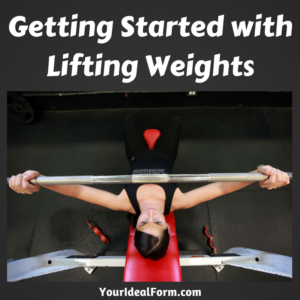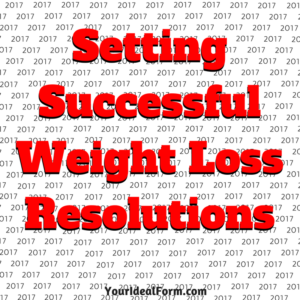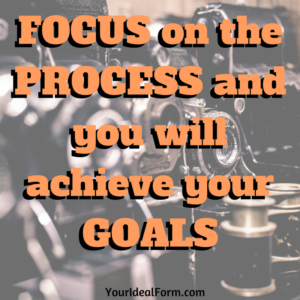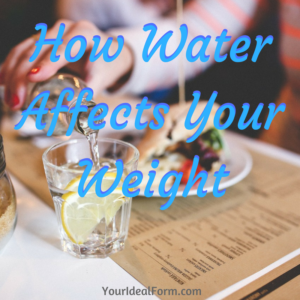
So you’ve got a good cardio routine down, but you’re really curious about the other half of the gym: the weights. It can be a bit intimidating over there if you don’t know what you’re doing, but I’m here to help you ease into it!
Let’s start by getting some facts straight: increasing your muscle mass is the only way to PERMANENTLY increase your metabolism and burn off more calories while you sleep. Don’t fall for the myth that lifting weights will make you bulky. If you want to get bulky, you will need to eat at a calorie surplus, eat a lot of protein, and for most women to get supper ripped, you will also need to take steroids. Lifting while eating to lose weight will give you the lean body you are looking for. “Toned” just means “having low body fat and showing some muscle definition.” If you want to get toned, you will have to lift weights. And you might be surprised just how much you’ll have to lift to start seeing that definition. If your purse weighs 10 pounds (some of us feel the need to carry whatever we might possibly need in case of any eventuality) or your toddler weighs 20 pounds, then toying around with five pound weights isn’t going to get you anywhere!
As always, consult a doctor. If you can, consult a trainer. Doing things incorrectly can hurt you, and we don’t want that. One session with a trainer to nail down your form and make sure you are lifting correctly can save you from a world of hurt and injury down the line.
Machines
Weight machines have you use levers to move a stack of weights. Working with a trainer will help you overcome the “I don’t know what I’m doing feeling” when approaching some of the weight machines. Some of them seriously look like medieval torture devices, and having someone show you how it works rather than figuring it out on your own can really make a difference. That said, newer weight machines at newer gyms will often have a diagram on them explaining how to use it. Weight machines tend to only work one way, so there is less chance of injury, since the machine forces you into a particular plane of motion. Whether with the help of a trainer, the guide on the machine, or asking the person who just hopped off the machine (people are generally happy to help if you just ask!), get into the proper position on the machine, use the pin to set a weight that’s good for you (start light, you can always increase later) and then work through as full a range of motion as you can.
Cable Machines
Cable Machines use a steel cable attached to one or more pulleys to move a stack of weights. Because the end of the cable that you hold can move around freely, cable machines let you work with a wider range of motion and exercises. Especially ones where you can adjust the height of the pulleys so that you can work different muscles. For example, you can attach a bar attachment to the cable, set the pulley low, and use it to do bicep curls. Or you can use that same bar attachment, set the pulley up high, and push down on the bar, working your triceps. By adjusting the pulleys and what attachments you use, you can easily get a full body workout in from just this one machine! Since the cable gives you a bit more freedom to move around somewhat, it is important that to get the most out of your exercises that you be sure to practice good form. Keep your core nice and tight, and for most exercises, you’ll likely want to keep a straight/flat (not rounded) back.
Dumbbells
Dumbbells move us into the realm of free weights. There is nothing restricting the movement beside your own muscles. Free weight exercises often require that you use auxiliary muscles for stabilization, giving you a better full-body workout. Dumbbell exercises are very versatile, and you can find them in most gyms, including hotel gyms if you tend to travel often. Depending on the exercises you are doing with dumbbells, you may want to consider using wrist wraps for extra wrist support. You may find that your arms can lift a certain weight without a problem, but your wrists end up being the limiting factor. If you’d like to get started with dumbbells, check the the end of this post for a free workout!
Barbells
Barbells are the next step up from dumbbells. Once you get into barbell lifting, form becomes VERY important. Olympic weightlifting and power lifting use barbells for lifts such as: squat, deadlift, clean, jerk, snatch, and press. Many of these movements are complex, full-body movements and can give you an amazing workout. As they are complex, I do not recommend working on barbell lifts without a trainer or very experienced lifter to check your form. That said, once you get into barbells, it is hard to go back to lifting any other types of weights! You get to realize just how strong you are, and it makes you feel unstoppable!
If you have any questions at all about weight lifting, please ask in the comments below!





